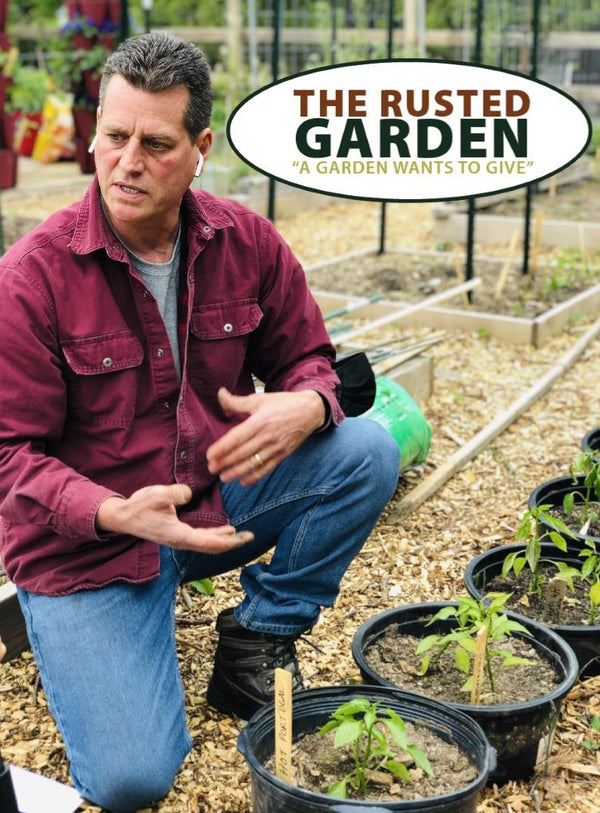Planting & Growing Guide: The Farmer's Almanac
There are many different ways to plant your vegetables, herbs and flowers. The planting & growing guide found on The Farmer's Almanac site is what I highly recommend. It is the most in-line with how I plant my seeds. It is packed full of information.
You can find planting instructions, growing tips, feeding routines and pest & disease management information there: Planting & Growing Guide: The Farmer's Almanac
Below is an excerpt for tomatoes. You can find guidelines for vegetables, fruits, herbs and flowers there.
Tomatoes are America’s favorite garden vegetable. (Yes, we technically eat the fruit of the tomato plant, but it’s used as a vegetable in eating and cooking and, thus, usually categorized in vegetables.)
This vine plant is fairly easy to grow and will produce a bumper crop with proper care. Its uses are versatile, however, tomato plants are susceptible to a range of pests and diseases.
Planting
- If you’re planting seeds (versus purchasing transplants), you’ll want to start your seeds indoors 6 to 8 weeks before the average last spring frost date. See our post on “Tomatoes From Seed the Easy Way.”
- Select a site with full sun and well-drained soil. For northern regions, is is VERY important that your site receives at least 6 hours of sun. For souther regions, light afternoon shade will help tomatoes survive and thrive.
- Two weeks before transplanting seedlings outdoors, till soil to about 1 foot and mix in aged manure, compost, or fertilizer.
- Harden off transplants for a week before moving outdoors.
- Transplant after last spring frost when the soil is warm. See our Best Planting Dates for Transplants for your region.
- Establish tomato stakes or cages in the soil at the time of planting. Staking keeps developing tomato fruit off the ground, while caging let’s the plant hold itself upright. Some sort of support system is recommended, but sprawling can also produce fine crops if you have the space, and if the weather cooperates.
- Plant seedlings two feet apart.
- Pinch off a few of the lower branches on transplants, and plant the root ball deep enough so that the remaining lowest leaves are just above the surface of the soil.
- Water well to reduce shock to the roots.
Care
- Water generously for the first few days.
- Water well throughout the growing season, about 2 inches per week during the summer. Keep watering consistent!
- Mulch five weeks after transplanting to retain moisture.
- To help tomatoes through periods of drought, find some flat rocks and place one next to each plant. The rocks pull water up from under the ground and keep it from evaporating into the atmosphere.
- Fertilize two weeks prior to first picking and again two weeks after first picking.
- If using stakes, prune plants by pinching off suckers so that only a couple stems are growing per stake. Learn how to build stakes and other tomato supports with this video.
- Practice crop rotation from year to year to prevent diseases that may have over wintered.
- Check out this post for even more tomato tips.
Pests/Diseases
Tomatoes are susceptible to insect pests, especially tomato hornworms and whiteflies. Link to our pest & problem pages below.
- Aphids
- Flea Beetles
- Tomato Hornworm
- Whiteflies
- Blossom-End Rot
- Late Blight is a fungal disease that can strike during any part of the growing season. It will cause grey, moldy spots on leaves and fruit which later turn brown. The disease is spread and supported by persistent damp weather. This disease will overwinter, so all infected plants should be destroyed. See our blog on “Avoid Blight With the Right Tomato.”
- Mosaic Virus creates distorted leaves and causes young growth to be narrow and twisted, and the leaves become mottled with yellow. Unfortunately, infected plants should be destroyed (but don’t put them in your compost pile).
- Cracking: When fruit growth is too rapid, the skin will crack. This usually occurs in uneven water or uneven moisture due to weather conditions (very rainy periods mixed with dry periods). Keep moisture levels constant with consistent watering and mulching.
- Basil repels aphids, whiteflies, tomato hornworms, and mosquitoes from tomatoes.
Harvest/Storage
- Leave your tomatoes on the vine as long as possible. If any fall off before they appear ripe, place them in a paper bag with the stem up and store them in a cool, dark place. If temperatures start to drop and your tomatoes aren’t ripening, look at this video for tips.
- Never place tomatoes on a sunny windowsill to ripen; they may rot before they are ripe!
- The perfect tomato for picking will be firm and very red in color, regardless of size, with perhaps some yellow remaining around the stem. A ripe tomato will be only slightly soft.
- If your tomato plant still has fruit when the first hard frost threatens, pull up the entire plant and hang it upside down in the basement or garage. Pick tomatoes as they redden.
- Never refrigerate fresh tomatoes. Doing so spoils the flavor and texture that make up that garden tomato taste.
- To freeze, core fresh unblemished tomatoes and place them whole in freezer bags or containers. Seal, label, and freeze. The skins will slip off when they defrost.
- You can harvest seeds from some tomato varieties. Learn how here.
